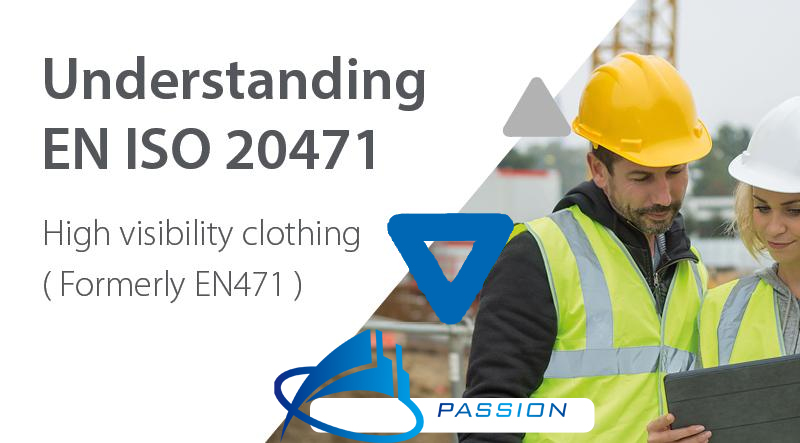
The EN ISO 20471 standard is something that many of us may have encountered without fully understanding what it means or why it matters. If you've ever seen someone wearing a brightly colored vest while working on the road, near traffic, or in low-light conditions, there's a good chance that their clothing adheres to this important standard. But what exactly is EN ISO 20471, and why is it so crucial for safety? Let's dive in and explore everything you need to know about this essential standard.
What is EN ISO 20471?
EN ISO 20471 is an international standard that specifies the requirements for high-visibility clothing, particularly for workers who need to be seen in hazardous environments. It's designed to ensure that workers are visible in low-light conditions, such as at night, or in situations where there's a lot of movement or poor visibility. Think of it as a safety protocol for your wardrobe—just as seatbelts are essential for car safety, EN ISO 20471-compliant clothing is crucial for workplace safety.
The Importance of Visibility
The main purpose of the EN ISO 20471 standard is to enhance visibility. If you've ever worked near traffic, in a factory, or on a construction site, you know how important it is to be seen clearly by others. High-visibility clothing ensures that workers are not just seen, but are seen from a distance and in all conditions—whether it’s during the day, night, or in foggy weather. In many industries, proper visibility can be the difference between life and death.
How Does EN ISO 20471 Work?
So, how does EN ISO 20471 work? It all comes down to the design and materials of the clothing. The standard outlines specific requirements for reflective materials, fluorescent colors, and design features that increase visibility. For example, EN ISO 20471-compliant clothing will often include reflective strips that help workers stand out against the surroundings, especially in low-light environments.
The clothing is categorized into different classes based on the level of visibility provided. Class 1 offers the least visibility, while Class 3 provides the highest level of visibility, which is often required for workers who are exposed to high-risk environments like highways.
The Components of High-Visibility Clothing
High-visibility clothing typically includes a combination of fluorescent materials and retroreflective materials. Fluorescent colors—such as bright orange, yellow, or green—are used because they stand out in daylight and low light. Retroreflective materials, on the other hand, reflect light back to its source, which is especially helpful at night or in dim conditions when vehicle headlights or street lamps can make the wearer visible from afar.
Levels of Visibility in EN ISO 20471
EN ISO 20471 classifies high-visibility clothing into three categories based on the visibility requirements:
Class 1: Minimum level of visibility, typically used for low-risk environments, such as warehouses or factory floors. This class is suitable for workers who are not exposed to high-speed traffic or moving vehicles.
Class 2: Designed for medium-risk environments, such as roadside workers or delivery personnel. It offers more coverage and visibility than Class 1.
Class 3: The highest level of visibility. This is required for workers in high-risk areas, like road construction sites or emergency responders who need to be seen from long distances, even in the darkest conditions.
Who Needs EN ISO 20471?
You might be wondering, "Is EN ISO 20471 only for people who work on roads or construction sites?" While these workers are among the most obvious groups who benefit from high-visibility clothing, the standard applies to anyone working in potentially hazardous conditions. This includes:
•Traffic controllers
•Construction workers
•Emergency personnel
•Airport ground crew
•Delivery drivers
Anyone who operates in environments where they need to be seen clearly by others, especially vehicles, can benefit from wearing EN ISO 20471-compliant gear.
EN ISO 20471 vs. Other Safety Standards
While EN ISO 20471 is widely recognized, there are other standards for safety and visibility in the workplace. For example, ANSI/ISEA 107 is a similar standard used in the United States. These standards may differ slightly in terms of specifications, but the goal remains the same: to protect workers from accidents and improve their visibility in hazardous conditions. The key difference lies in regional regulations and the specific industries each standard applies to.
The Role of Color in High-Visibility Gear
When it comes to high-visibility clothing, color is more than just a fashion statement. Fluorescent colors—such as orange, yellow, and green—are carefully chosen because they stand out the most during daylight. These colors have been scientifically proven to be visible in broad daylight, even when surrounded by other colors.
In contrast, retroreflective materials are often silver or gray but are designed to reflect light back to its source, improving visibility in the dark. When combined, these two elements create a powerful visual signal that helps protect workers in various settings.
Post time: Jan-02-2025





